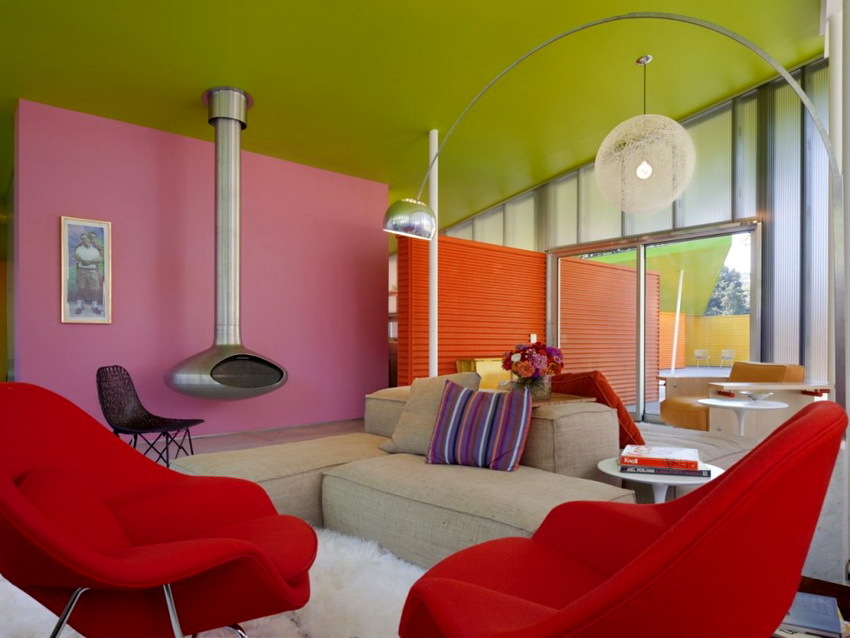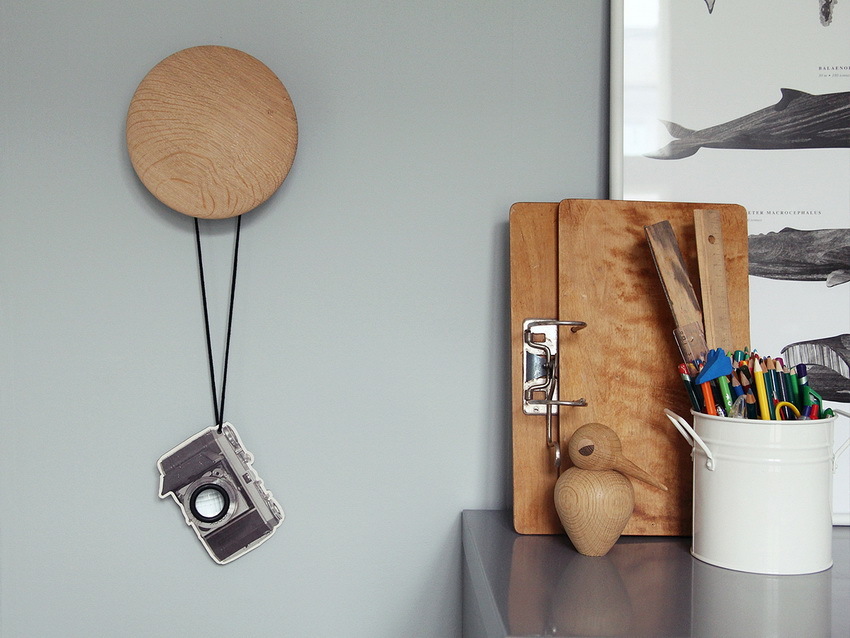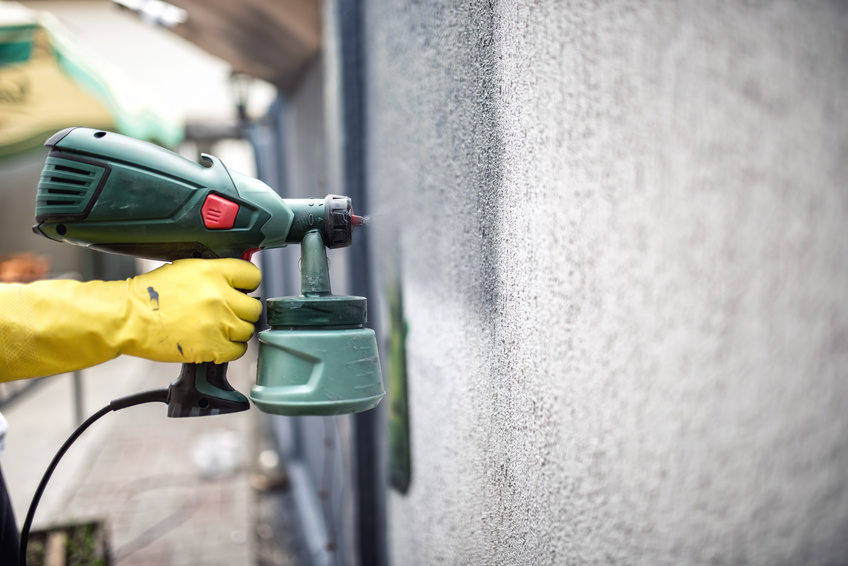SHARE
in social networks
In this article, you can see that is a latex paint for walls and what opportunities it offers. The text provides information about all varieties of finishing materials, water-based, their technical characteristics and features of application.

The possibility of water-based paints allow you to create high-quality finish of the walls inside and outside
Content
-
1 Latex paint for walls: basic information about the group
- 1.1 The proportions of components in the composition of water-based paints for interior works
- 1.2 Key labeling water-based paints, GOST
- 1.3 Technical characteristics of latex paint VEAK 1180
-
2 The use of water-based paint consumption, coloring, tool
- 2.1 Recommendations on the use of color schemes for water-based paints
- 2.2 The calculation of the required amount of water-based paint, the cost of 1m2
- 2.3 How to paint the walls a roller: Recommendations
- 2.4 Can I hang wallpaper in the water-based paints
- 2.5 Is it possible to paint with latex enamel
- 2.6 Whether painting the ceiling can be water-based paint on the old paint
Latex paint for walls: basic information about the group
Water based paint is a broad category of materials intended for finishing various surfaces. To study these compounds in the narrower sense, it is necessary to pay attention to their components, purpose and method of production. complex chemical name can be seen in the composition of water-based dyes, but in plain language, most of them sounds like silicone, PVA glue, chalk and so on. d. Each dye type of this category has its own advantages and disadvantages, which depend on the components.

The compositions of paints based on aqueous emulsion may vary, but they all have their advantages
The basis for these dyes serves as a water in which tiny particles are polymeric substances. The nature of these materials depends on the type of paint. In addition to this, additional components are contained in the composition. Manufacturers use these elements to give a finishing material useful properties and to improve its characteristics.
such components may be present in the composition of water-based dyes:
- defoamers;
- antiseptic agents;
- plasticizers;
- antifungal agents;
- dispersants;
- anti-freeze agents.
The proportions of components in the composition of water-based paints for interior works
The emulsifier or film former is a major constituent component of water-based dyes. Emulsifier depends on the type of scope of the fabric.

The use of water-based paints in the design helps to create a bright interesting accents
In used as emulsifiers:
- butadiene-styrene;
- acrylate;
- polyvinyl acetate, or in other words, the PVA;
- styrene-acrylate.
dye marking depends on the type of film former. Additional formulations are filled with mica, chalk, talc, barite. Each of these components may be present in the composition alone or together with others in different proportional ratio. In carboxymethylcellulose as a thickening agent is used. This component has a second name - the adhesive composition of the CMC.
Useful advice!Experts recommend when working with water-based paint to buy airbrush The qualitative and uniform coating.
The percentage of water-based paint components:
| Component | The percentage content of dye,% |
| The polymer in aqueous solution (dispersion) | 50-60 |
| Coloring pigments and fillers | 35-40 |
| Thickeners and plasticizers | 5-8 |
| additional components | 1-7 |
White latex paint was prepared by adding a white pigment composition, for example, zinc oxide or titanium dioxide. All the existing types of water-based dye labeled according to the type of emulsifier.
Allocate the following material variants:
- silicate;
- acrylic;
- silicone;
- mineral.
Many buyers are interested in the differences between acrylic paint on water-based formulations. The usual mixture of water-based is not suitable for the finishing of metal surfaces. For these purposes it is better to take the acrylic material, which has heat and water resistance.
Key labeling water-based paints, GOST
In stores you can find a wide selection of painting materials from different companies. So before you buy a water-based paint, you need to carefully examine the specifications and labeling. These overlays allow an idea of which components comprises a mixture of, what its properties and application.

Before you purchase a water-emulsion composition should examine its characteristics and marking
The first value is marked by the composition of the type:
- VE - latex paint.
- WA - water-dispersed.
Further, the manufacturer places the information on the type of polymer material used as the basis for the production of dyes.
By polymer type the following types of markings on the packaging:
- CN (butadiene-styrene);
- VA (polyvinyl acetate);
- AK (acrylate or styrene-acrylate);
- BC (polyvinyl alcohol).
The number "1" marked facade water-based paints, the price of which is significantly higher than conventional formulations. These mixtures are resistant to all weather conditions: precipitation, low temperature, climate change, the influence of ultraviolet and microorganisms. The average cost for the amount of 2.7 liters on the example of products Tikkurila is 770 rubles.

Matt coating the walls with latex paint Tikkurila
Numeral "2" indicates a composition intended for internal use. Thus, the marked interior water-based paint for the ceiling and walls. A similar amount of Tikkurila mixture for internal use costs about 450 rubles.
When choosing the value of the dye have and regulations. According to GOST under number 281960-89 dye manufactured in full compliance with its requirements, it is considered of high quality.
Important!TU standards significantly reduced. Therefore, the dye made in accordance with its rules, can not be considered high-quality.
Technical characteristics of latex paint VEAK 1180
This type of dye is popular with consumers. Marking "CE" indicates that the basis of the composition is an aqueous emulsion. The role of the polymeric emulsifier responsible for film formation, acts acrylic or substances which are its derivatives. This is indicated by the marking "AK".
Technical indicators latex paint VEAK 1180:
| Characteristic | Value |
| The degree of frost, the number of cycles | 4-5 |
| Index relative viscosity, with | 20-42 |
| drying the coating speed, h | 15 |
| The amount of nonvolatile substances,% | 60 |
| Latex paint flow quantity per 1 m2, r | 160 |
These indicators are more useful for internal painting works on finishing the ceiling and walls. Dye perfectly fits to the pre-prepared base.
This composition may be processing the following types of surfaces:
- concrete;
- plastered base;
- brickwork;
- metal (with prior priming).
The base color of the foundation VEAK 1180 - white. If desired, the customer can add colored pigments to the composition to obtain any desired color. The average cost of 1 kg of the dye is about 500 rubles.
The use of water-based paint consumption, coloring, tool
In shops meets two options pigments: natural and artificial. When using natural pigment result will be more complete, however, there is a likelihood that the coating will burn out quickly hue under ultraviolet light. For this reason, the use of natural color scheme is appropriate in areas where no direct sunlight penetrates. Artificial pigments are not as bright, but exhibit a high UV resistance.

A variety of color options for tinting water-based paint is very large
To achieve the desired shade is very difficult at home, so it's best to seek help from professionals. Choose your favorite shade of the palette, which is in every store, tinting can be done with a special machine.
Recommendations on the use of color schemes for water-based paints
If desired, tinting composition can be performed independently. Most often resort to this procedure in order to save. The cost of white paint and pigments set much lower than the price of a tinted composition. Experimenting at home, you can achieve the desired color depth. Also in the photo the color of caramel for latex paint will not always correspond to what happens as a result of mixing in the car.
To avoid overzealous should introduce pigments into the composition to gradually until the color turns homogeneous. In this case, the mixture should always stir.
Useful advice!Re-do the same hue is extremely difficult, so it is advisable to calculate in advance Estimated expenditure latex paint with a small margin and prepare the necessary a portion at a time.

In case of self-tinted paint should distribute the amount of material, so that was enough for the whole scope of work
You can carry out a test on a small amount of tinting to study the properties of color schemes. Thereafter, the test on an inconspicuous area of the wall. Should wait until the composition is completely dry to Kohler emerged. This requires 1-2 days.
For small rooms it is recommended to choose shades of light colors. They can visually expand the space. If the walls in the room will be dark, and the ceiling - light, space, on the contrary, will appear more narrow. By resorting to this method when you need to visually raise the ceiling height. It is better if the design will be present not more three colors. This will avoid the diversity of colors. The exception is white and black, and shades of the same color.
The calculation of the required amount of water-based paint, the cost of 1m2
The rate of application of the dye is usually indicated by the manufacturer on the packaging. These data help determine approximately how many staff will take to finish a certain area.
General rates of application of water-based dyes:
| The aqueous emulsion type dye | Consumption for the primary application, g / m | Consumption on the second layer, g / m² |
| latex | 600 | 400 |
| silicone | 300 | 150 |
| Silicate | 400 | 350 |
| Acrylic | 250 | 150 |
| polyvinyl acetate | 550 | 350 |
On the consumption of water-based paint on the 1 m and additional factors can influence. For example, the structure of the treatment surface. For staining of smooth plaster require 10-20% less dye than for processing of textured material. In calculating the metrics for the first and second layer are summed. In addition, consider a method for applying the composition and characteristics of the tool to be used.
Climatic conditions can also affect the cost and quality of results. The heat from the water evaporates quickly, so the coating can get uneven. In this case, you need to align the surface, and sometimes touch up spots. Paintable wallpaper will require increasing the rate of about 20%. Paper is a porous structure, so part of the composition it absorbs. About 5% of the ink is lost in the processing of the ceiling, flowing down to the floor.
How to paint the walls a roller: Recommendations
It is not recommended to use brush for painting with latex paint surfaces. Using this tool would increase the flow. Most often such work is taken from the roller tray. In this case, the flow of the dye as fine characteristics of the coating will depend on the material and coats the tool. Cushion with a long nap is better to use for finishing stucco and rough surfaces. For painting smooth base is necessary to take the instrument with short fibers.

Roller tray with the most convenient to use for painting walls
Useful advice!The use of the spray gun for water-based inks will significantly reduce the consumption structure. This tool is the most economical and suitable for this type of work.
Recommendations for staining the walls with a roller:
- tray size must be chosen so that the tool is placed in it freely;
- roller should not sink more than a quarter in the paint;
- during the application you need to press the roller with the same force, passing across the surface to avoid the strip and divorces;
- to dilute the thick paint, you can add water, but no more than 10%;
- do not often dip roller, the coating should have a thin and smooth;
- it is not necessary to try to apply a thick layer of dye, to reduce the work will lead to cost overruns and the appearance of cracks in the coating;
- between layers is necessary to take breaks (at least 2 hours), the dye has dried up.

When applying the paint you need to follow the technology to produce high-quality coatings
Can I hang wallpaper in the water-based paints
Latex paint - a universal form of material that is combined with different types of surfaces. Often there is a need to redesign the previously painted areas, for example, wallpaper pokleit. Such replacement option finishing possible but subject to prior preparation of the substrate. To this end, the wall surface is treated with a solution of glue and ground. The components are mixed in a ratio of 1: 1.
Wallpaper can be pasted over the latex dye, provided that the previous coating is qualitative composition and without breaking technology.
Note!Before proceeding to wallpapering, test the adhesive properties of the dye (reliability coating fixation). To do this, the usual newspaper pasted on the wall, and after drying off from the wall. If it is difficult to disconnect, then paint has strong enough to withstand the weight of the wallpaper.
Is it possible to paint with latex enamel
Sometimes the wall old coating is present, usually in the form of oil paint. These compounds were previously very popular, so they are almost universally used in homes as decoration. Since these materials are not compatible, you must remove the old paint.

The walls must be prepared to paint: remove the old coating and apply sanded primer
How to remove old paint from the walls:
- Removal by mechanical means.
- Chemical dissolution.
- Removal of the coating via temperature feedback.
Since enamel is much easier. To latex paint lay down on top of the enamel, perform frosting or use a primer. matting effect is achieved by applying a varnish, although this method has a drawback - an unpleasant pungent smell.
Related article:
Paint the walls in the apartment: features, types and application recommendations
Advantages and disadvantages of this type of coverage, species and features compositions price. Recommendations for choosing a dye and optimum colors.
An alternative is to apply a machining surface using fine grain emery paper. Due to this increased degree of adhesion. A similar function is performed by the primer.
Whether painting the ceiling can be water-based paint on the old paint
In order to determine the possibility of staining latex paint over the old coating, it is necessary to assess its condition and to prepare the surface. The dye will not be able to hide all the defects, especially if the defects are on the outdated lacquer layer. All irregularities and damage, on the contrary, become visible and catchy. As a result of all the work, as the money spent on the purchase of paint, be lost in vain.

Using the gun significantly reduce ink consumption and is useful when painting large areas
If the surface is flat and has no serious flaws, before painting is recommended to apply soil composition. If the old paint peels off, the base should be well cleaned in problem areas. Not may be applied with water-based dye on top of the old lime whitewash. In this case it is necessary to remove the coating and clean the substrate with an alkaline water solution.
Water paint formulations - the most easy-to-use and practical types of dyes. Thanks to an extensive range of buyers have no problem with the choice of finishing material for interior or exterior use.


